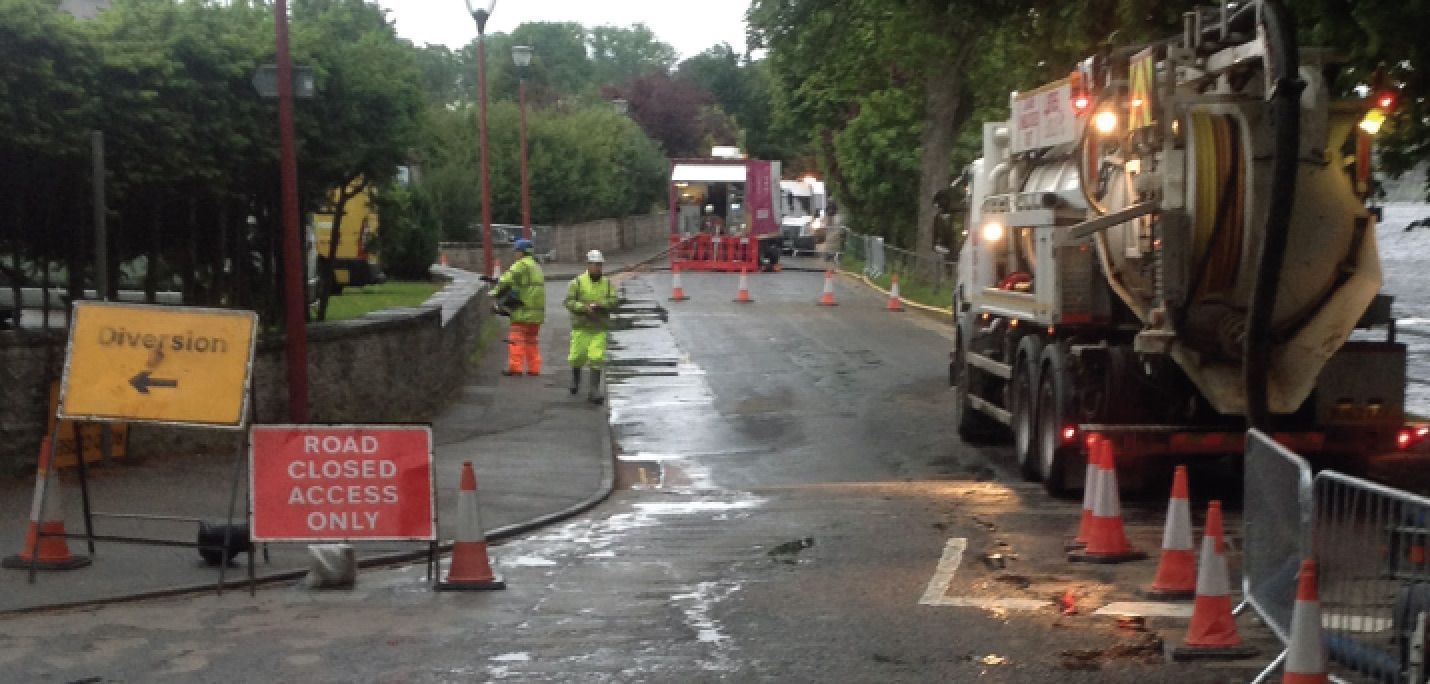Case study – Scottish Water’s drain relining success
Project challenge
Lanes Group was commissioned by Scottish Water to clean and line a combined sewer in the centre of Inverness in the Scottish Highlands, right alongside the River Ness. The 300mm-diameter clay pipe had been identified as being at high risk of contributing to localised flooding during heavy rainfall.
This would greatly inconvenience local people and create a pollution risk for the river. The solution was to strengthen the pipe by relining it, greatly reducing the risk of it failing. A major challenge was to complete all of the work within tight daily time frames to minimise their impact on nearby businesses and essential services. Lanes’ no-dig sewer rehabilitation expertise played a key role in achieving this.
The project
The sewer being lined was close to a busy city centre, near a hospital, a hospice and Inverness’ main theatre. This meant the Lanes team could only work between 6.30pm and 11.30pm each day – a five-hour window in which to set up over-pumping to divert sewer flows, carry out our work, and then clear the site each day.
Root cause revealed
The main cause of the higher flood risk was tree root infiltration into the sewer. Over three evenings, the roots were removed either by water jetting or with a KA-TE cutter, a remote-controlled grinding tool. Scottish Water used Lanes’ CCTV drainage survey footage to assess the condition of the sewer, and decide how much of its length needed to be lined to strengthen it and prevent further root ingress.
Over three more evenings, a team from the Lanes Sewer Renovation Division then installed three liners – two measuring 70m, and the third measuring 60m – in separate sections of the sewer pipe.
Fast and reliable technology
Ultraviolet (UV) cure in place pipe (CIPP) lining was selected because it suited the very short working time frame available. It meant each section of liner could be installed, cured and reinstated within the five-hour window.
Unlike conventional hot-water CIPP lining, the ultraviolet relining equipment could be set up quickly, delivering a rapid lining process without creating any hazardous wastewater, largely eliminating the risk of polluting the River Ness.
This method involves the fitting of a glass fibre liner in the pipe, which is then inflated against its sides. A UV light array is then sent through the pipe to cure or harden the resin impregnated in the liner, before lateral connections are re-established with the KA-TE cutter.
Client benefits
- Access to the latest UV pipe lining technology and expertise, allowing the lining work to be carried out with minimal impact on residents and businesses, and in the shortest timeframe
- Work scheduled to ensure local facilities – including a hospital and a theatre – were not inconvenienced
- Excellent project management and coordination of a full range of pipe repair services, using both local and national service teams
- Work carried out by a pipe rehabilitation specialist with the highest health and safety standards, recognised by achieving a RoSPA Gold Medal
- Lining project successfully completed on time and within budget
Further reading
-

UV lining flood prevention PDF
Download PDF








